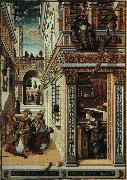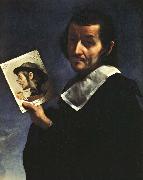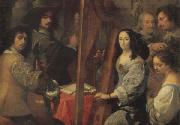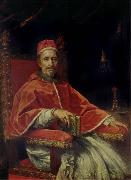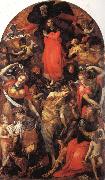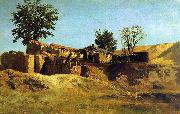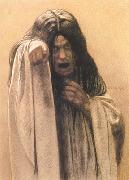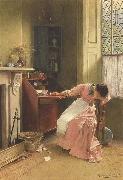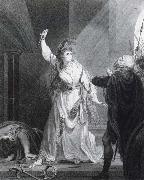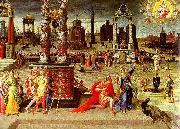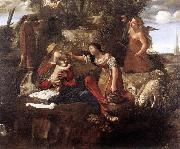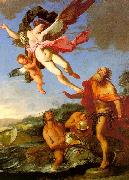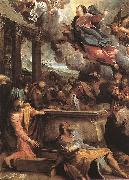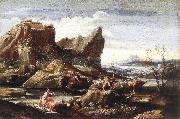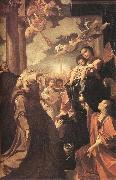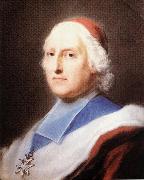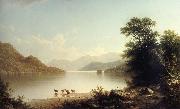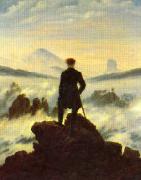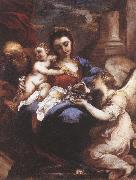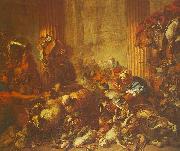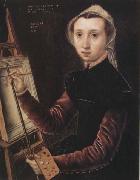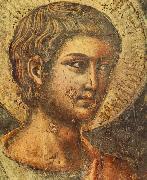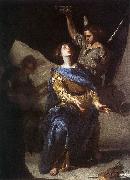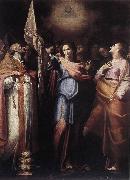|
|
|
|
|
|
|
|
|
|
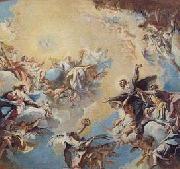 |
Carlo Innocenzo Carlone
|
|
(1686-1775) was an Italian painter and engraver, active especially in Germany.
He was a native of Scaria, near Como, in Lombardy, but may have been from the Carloni family of Genoese painters. He was the son of a sculptor, but he preferred painting, and was placed under the care of Giulio Quaglio. He afterwards studied at Venice and at Rome, until he was 23 years of age, when he visited Germany, where he has left works in oil and in fresco at Ludwigsburg, Passau, Linz, Breslau, Prague, and Vienna.
He painted large decorative fresco cycles for palaces in Vienna, Prague and Southern Germany. For example, Carlone is known for painting the ceiling images in the Upper Belvedere of the Belvedere palace complex. His The Glorification of Saints Felix and Adauctus (1759-61) was commissioned for the cupola of the church of San Felice del Benaco on Lake Garda. He died at Como.
|
|
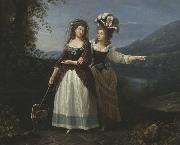 |
Carlo Labruzzi
|
|
painted Aleksandra and Izabela Potocki taking a stroll near to lake Albano in 1779-1780
|
|
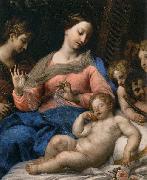 |
Carlo Maratta
|
|
(13 May 1625 - 15 December 1713) was an Italian painter, active mostly in Rome, and known principally for his classicizing paintings executed in a Late Baroque Classical manner. Although he is part of the classical tradition stemming from Raphael, he was not exempt from the influence of Baroque painting and particularly in his use of colour. His contemporary and friend, Giovanni Bellori, wrote an early biography on Maratta.
|
|
|
|
|
|
|
|
|
|
|
|
|
|
|
|
|
|
carmignani
|
|
(born January 22, 1945 in Altopascio) is an Italian professional football coach and a former player.
|
|
|
|
|
|
|
|
|
|
|
|
|
|
|
|
|
|
|
|
|
|
|
|
|
|
|
|
|
|
|
|
|
|
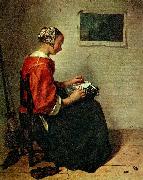 |
caspar netscher
|
|
Caspar (or Gaspar) Netscher (Heidelberg, 1639 ?C Den Haag, January 15, 1684) was a Dutch portrait and genre painter. He was a master in depicting oriental rugs, silk and brocade and introduced an international style to the Northern Netherlands.
Little is know of Netscher's early years. According to Arnold Houbraken's 17th century biographical study of Dutch painters he was born in Heidelberg or Prague. His father Johann Netscher probably was a sculptor from Stuttgart who died in Poland when he was two years of age. It is also suggested that Caspar may have been the son of a Rotterdam painter. His mother, fleeing from the dangers of a civil war, carried him to Arnhem. On her way two of her children died. In Arnhem he was adopted by a physician named A. Tullekens. At first he was destined for the profession of his patron, but owing to his great aptitude for painting he was placed under a local artist named Hendrick Coster, and in 1654 became a student of Ter Borch in Deventer, who had family connections to Tullekens. He was Ter Borch's most gifted pupil, probably worked as an assistant as well and he appears several times as a model on Ter Borch's paintings.
The Lace-Maker by Caspar Netscher (1662), oil on canvas, 33 x 27 cm. Wallace Collection, LondonIn 1658 he set out for Italy to complete his education there. However, he didn't get farther south than Bordeaux that fall, where he married Margaretha Godijn in 1659. There he toiled hard to earn a livelihood by painting small cabinet pictures which are now highly valued on account of their exquisite finish. After moving to The Hague in 1662, possibly because of the prosecutions of Protestants, he turned his attention to portrait-painting. In this branch of his art was more successful. In 1668 he joined the Schutterij and Cosimo III de' Medici, traveling through the Netherlands bought four paintings.
It is likely that Netscher knew the painters Frans van Mieris, Sr. (1635 -1681) and Gerard Dou, but it is certain that he knew the painter Gerrit de Hooch from The Hague as his wife gave her name to Gerrit's new born daughter Margarita in 1676, the event being witnessed by Caspar as well as his wife. He was patronized by William III, and his earnings soon enabled him to gratify his own taste by depicting musical and conversational pieces.
|
|
 |
Caspar van Wittel
|
|
(born Caspar Adriaensz. van Wittel, later a.k.a. Gaspare Vanvitelli, Gasparo degli Occhiali) (1653 - September 13, 1736) was a Dutch Golden Age landscape painter.
Van Wittel was born in Amersfoort. He learned painting first from Thomas Jansz van Veenendaal for 4 or 5 years and then from Matthias Withoos for 7 years, until Withoos left Amersfoort. In Amersfoort, he likely was exposed to Dutch landscape artists such as Jan van der Heyden and Gerrit Berckheyde. His first extant works were made in Hoorn in 1672, but he relocated to Rome with his family ca. 1675 and made his career there. Like his former teacher, he joined the Bentvueghels with the nickname "Piktoors" or "Toorts van Amersfoort"(torch of Amersfort).
He married in Rome in 1697, and stayed most of his life in that city, though, between 1694 and 1710, he toured Italy and painted in places like Florence, Bologna, Ferrara, Venice, Milan, Piacenza and Naples. He is one of the principal painters of topographical views known as vedute.
Gaspar van Wittel died in Rome. His son Luigi would become a famous architect and also carries the italianized family name of Vanvitelli.
In Luigi's biography is written that his father was born in July 1656, but Van Wittel's grave in Rome states that he died at the age of 83 in 1736.
|
|
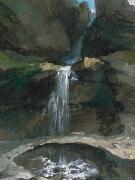 |
Caspar Wolf
|
|
Caspar Wolf (Muri, Aargau, 3 May 1735 - Heidelberg, 6 October 1783) was a Swiss painter, known mostly for his dramatic paintings of Alps. He was strongly influenced by Albrecht von Hallers poem on the Alps, and the Sturm und Drang movement. After 1773 Wolf mostly painted glaciers, caves, waterfalls and gorges.
Wolf was the son of a furniture maker, who was banned from his city. Wolf was trained in Konstanz, between 1753 and 1759 he worked in Augsburg, Munich, Passau as a decoration painter. Not being able to sell his work he went disappointed back to his home town. For Horben Castle he painted by hand the wallpaper on the first floor. In 1768 Wolf lived in Basel. From 1769 till 1771 he stayed in Paris and worked with Philip James de Loutherbourg. In 1774 he moved to Bern. Wolf made a deal with the local publisher Abraham Wagner who had a geological interest, to deliver 200 paintings. He travelled with Wagner or a minister Jakob Samuel Wyttenbach in Berner Oberland and Wallis. From 1780-1781 he was working in Spa, Cologne, Aix-la-Chapelle and Desseldorf. He died in poor circumstances in a hospital.
In 1779 his prints were exposed were Bern but the selling of the book became a failure. Wagner became help from a Swiss army officer in Dutch service and in 1785 30 aquatints were published in Amsterdam. Till 1948 90 of these aquatints were exposed in Keukenhof Castle, but sold. Today these works can be seen in the Kunsthaus in Aarau.
His son Theodor Wolf (1770 - 1818) was a still life painter. |
|
|
|
 |
Cassius Marcellus Coolidge
|
|
(September 18, 1844?CJanuary 13, 1934) was an American artist, best known for a series of nine paintings of anthropomorphized dogs.
Born in upstate New York to abolitionist Quaker farmers, Coolidge was known to friends and family as "Cash." While he had no formal training as an artist his natural aptitude for drawing led him to create cartoons for his local newspaper when in his twenties. He is credited with creating Comic Foregrounds, life-size cutouts into which one's head was placed so as to be photographed as an amusing character.
In 1903, Coolidge contracted with the advertising firm of Brown & Bigelow of St. Paul, Minnesota, to create sixteen oil paintings of dogs in various human poses. |
|
|
|
|
|
|
|
|
|
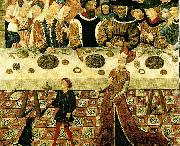 |
catalan school
|
|
banquet of herod
mid-fifteenth century
new york, metropolitan museum |
|
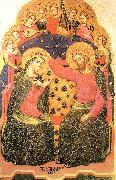 |
CATARINO
|
|
Italian painter, Venetian school (known 1362-1382 in Venice) |
|
|
|
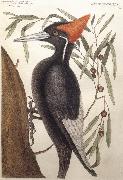 |
Catesby Mark
|
|
English-born artist-naturalist and Traveller, b.c.1679 d.1749
|
|
|
|
|
|
caulery
|
|
ball at the valois court.c
1582
rennes, museum |
|
|
|
|
|
|
|
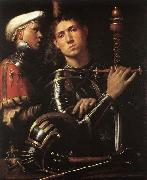 |
CAVAZZOLA
|
|
(b. ca. 1486, Verona, d. 1522, Verona)
Italian painter |
|
|







